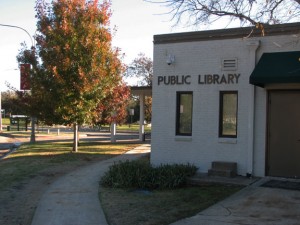![]() Assets-based community development is a way of thinking about how libraries can embed their work within their community rather than waiting for the community to walk through their doors. School librarians who consistently reach outside the walls of the library to integrate resources found in the community can increase the real-world relevance of their cotaught lessons. They can go the extra step to build collaborative partnerships that take the literacy learning expertise of the school librarian and resources of the school library program out into the community.
Assets-based community development is a way of thinking about how libraries can embed their work within their community rather than waiting for the community to walk through their doors. School librarians who consistently reach outside the walls of the library to integrate resources found in the community can increase the real-world relevance of their cotaught lessons. They can go the extra step to build collaborative partnerships that take the literacy learning expertise of the school librarian and resources of the school library program out into the community.
Situating their inquiry in the real world of their community can increase students’ motivation and help ensure that the questions they ask are authentic, real-world questions. This can also help learners identify a target audience that will actually care about their findings. Engaging in this level of “professional” work may be most important for high school students who are considering their workforce and educational options after graduation.
With ubiquitous Web-based information, students (most?) often search for non-print resources when conducting inquiry projects. Non-profit and governmental agencies that publish online information can be a rich source of data for students, particularly secondary students who seek to learn more about their communities as they pursue topics of personal interest. School librarians can assist students and teachers by connecting them with resources in the community with which they are unfamiliar.
For example, in a course in human geography, high school students may be asked to explore various aspects of their community. Non-profit agencies such as chapters of the United Way regularly gather data on demographics, income levels and economic opportunities, education attainment, physical and mental health, and other aspects of their immediate community. School librarians can create pathfinders to support students’ learning as they learn more about the community in which their inquiry questions are situated.
Here is a sample pathfinder I created for the Denton (Texas) Inquiry 4 Lifelong Learning project: http://tinyurl.com/di4ll-9-resources. It includes links to data from the Denton Chapter of the United Way as well as “Engage Denton,” an online community forum, and nationwide resources that collect data on U.S. communities.
Depending on students’ inquiry questions, all types of community agencies may be able to provide information. A school librarian who has connections in the community may help individual or small groups of students connect to experts and data that may not otherwise be known or available to them. In the process, community agencies learn more about the learning in which students are engaged. This knowledge can lead to stronger connections, collaborative projects, and can also build school library advocates.
As David Lankes argues, “it is time for a new librarianship, one centered on learning and knowledge, not on books and materials, where the community is the collection, and we spend much more time in connection development instead of collection development” (9). Bringing the resources of the community into students’ learning and students’ learning into the community are places to begin “connection development.”
Works Cited
Denton Inquiry 4 Lifelong Learning. Sept. 2012. Wikispaces. Web. 04 Dec. 2014 <http://dentoninquiry4lifelonglearning.wikispaces.com>.
Lankes, R. David. The Atlas of New Librarianship. Cambridge, MA: MIT Press, 2011. Print.
Image Credit: Prawny. “Icons-icon-team.jpg.” Morguefile. Web 01 Dec. 2014 <http://mrg.bz/EtES83>.

